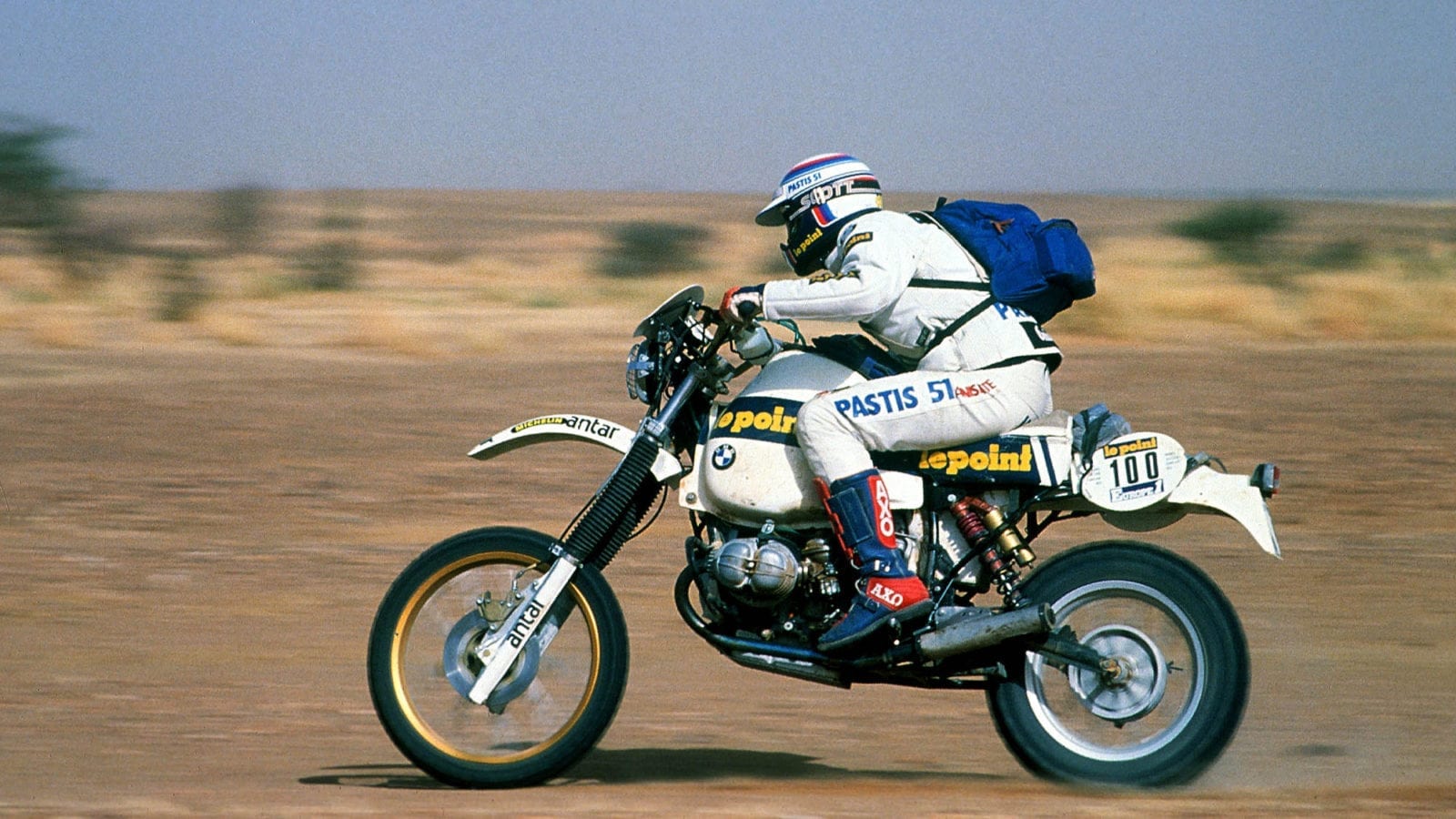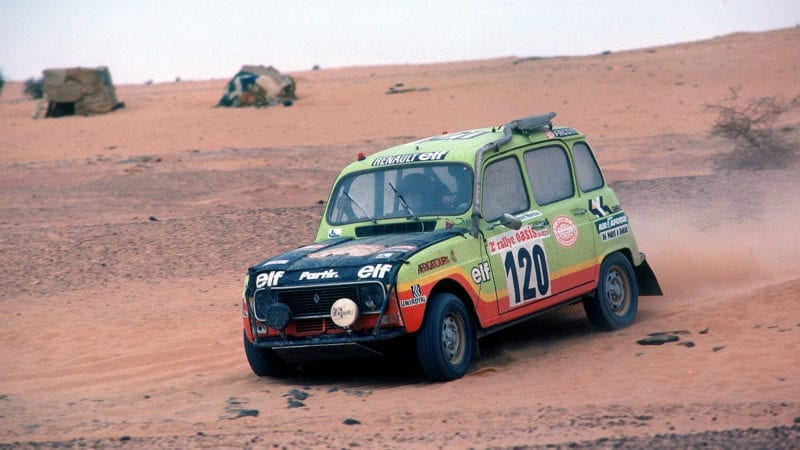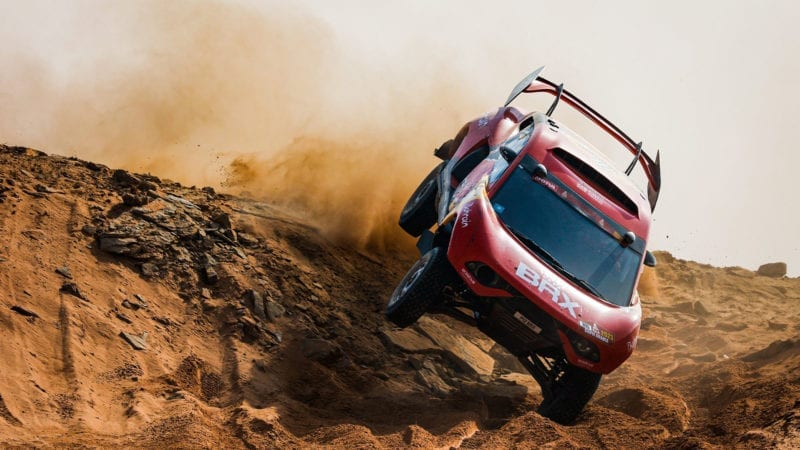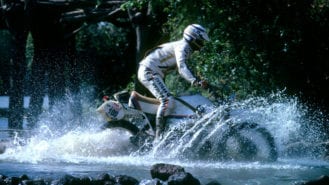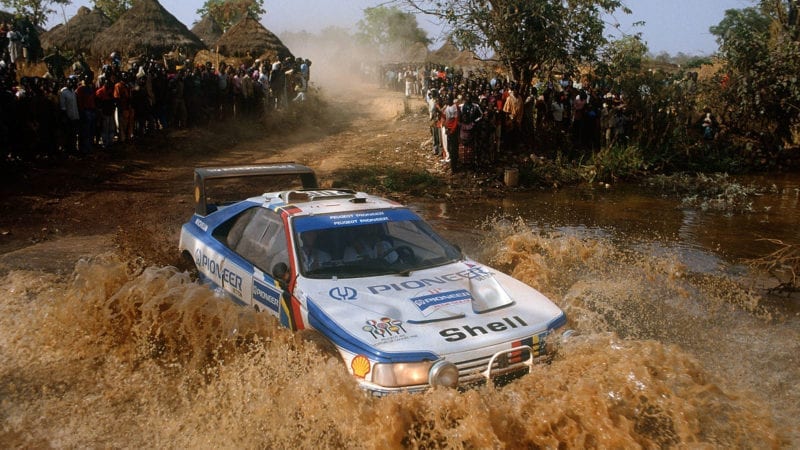“I knew it would be challenging and I knew we would have fun, but I expected this to be a one-off,” he said. “I never expected so many people to fall in love with the desert like I had.”
The Dakar bug had given French racers and adventurers Sahara fever. Yachtsman Gerard d’Aboville (later to row across the Pacific) and three-time Le Mans veteran Henri Pescarolo set sail for the Sahara in 1980.
“I didn’t know what to expect,” said Pescarolo, who this year entered his 13th Dakar in an American desert racing Chevy pickup. “I had seen the film and heard the stories of spending hours digging and going two weeks with no shower, but until you see it for yourself it means nothing.
“As a racing driver you expect to be looked after, with hotels and pretty girls but out there in the desert, well it doesn’t matter if you are the president, you are on your own. I learned a lot about myself on the Dakar.”
Neveu won again for the second year on his Yamaha, while the Volkswagen Iltis dominated the four-wheel brigade. The caravan had swelled from 170 to 216 in a year but still less than a hundred reached Dakar.
The Marreau brothers came back in their R4 and again finished fourth. Leaning on other cars going through corners was one of their tactics. “We can’t help it,” said Claude, aware that his days of glory would be short-lived. “It’s the only way to go round a corner at speed.”
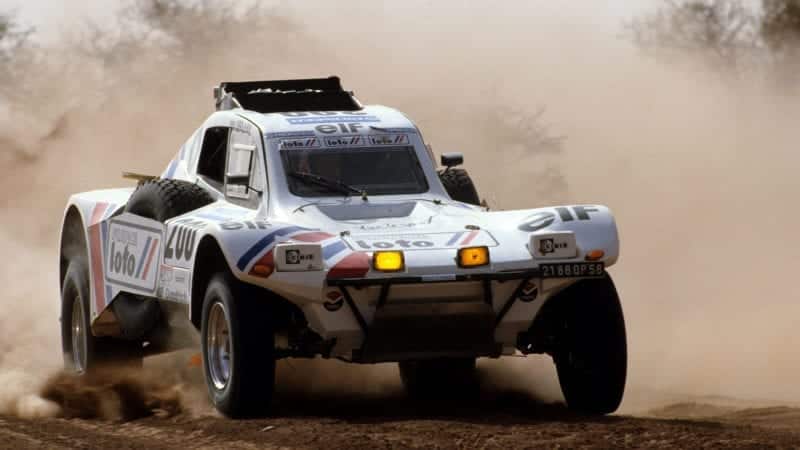
1989: Hubert takes the buggy option
DPPI
Just three years after the fun had begun, and with the arrival of electronic news gathering, the car manufacturers spotted the Dakar as a way to market boring family saloons. Cue Citroen and their works entry of four CX 2400 GTi’s in 1981.
“It was inevitable that car makers would find the Dakar irresistible,” said Parisian Land Rover dealer Rene Metge, who (with the help of the Sahara) defeated the Citroen quartet. “They saw the Marreau brothers with the R4 and thought they could bring along an ordinary CX and win.”
If Citroen had prized open the door to the desert, within another three years the flood gates had dumped Mercedes, Range Rover, Lada, Mitsubishi, Porsche and Opel into the world’s toughest proving ground.
With the works teams came big name drivers and big budgets. Partly because of the French nature of the event and partly because it was an endurance race, Le Mans veterans seemed popular choices for the desert. Jaussaud, Pescarolo, Courage, Ickx and Jabouille all swapped the Sarthe for the Sahara.
“The trouble is, a day at Le Mans feels like running the 100 metres after doing the Dakar,” said Jacky Ickx, who won in 1983 behind the wheel of a Mercedes 280. “But to have put a Formula One driver in the car would have spelled disaster.” Sure enough, Grand Prix drivers have tackled the Dakar. But none with any great success. Former McLaren driver Philippe Alliot taking to two wheels in Africa has had more success than most, but it was a baptism of fire for the Frenchman. On a narrow track though a desert oasis, Alliot found himself up to his axles in sand. In an instant, his wheels stopped turning and the lack of momentum threw him over the handlebars onto the desert floor.
